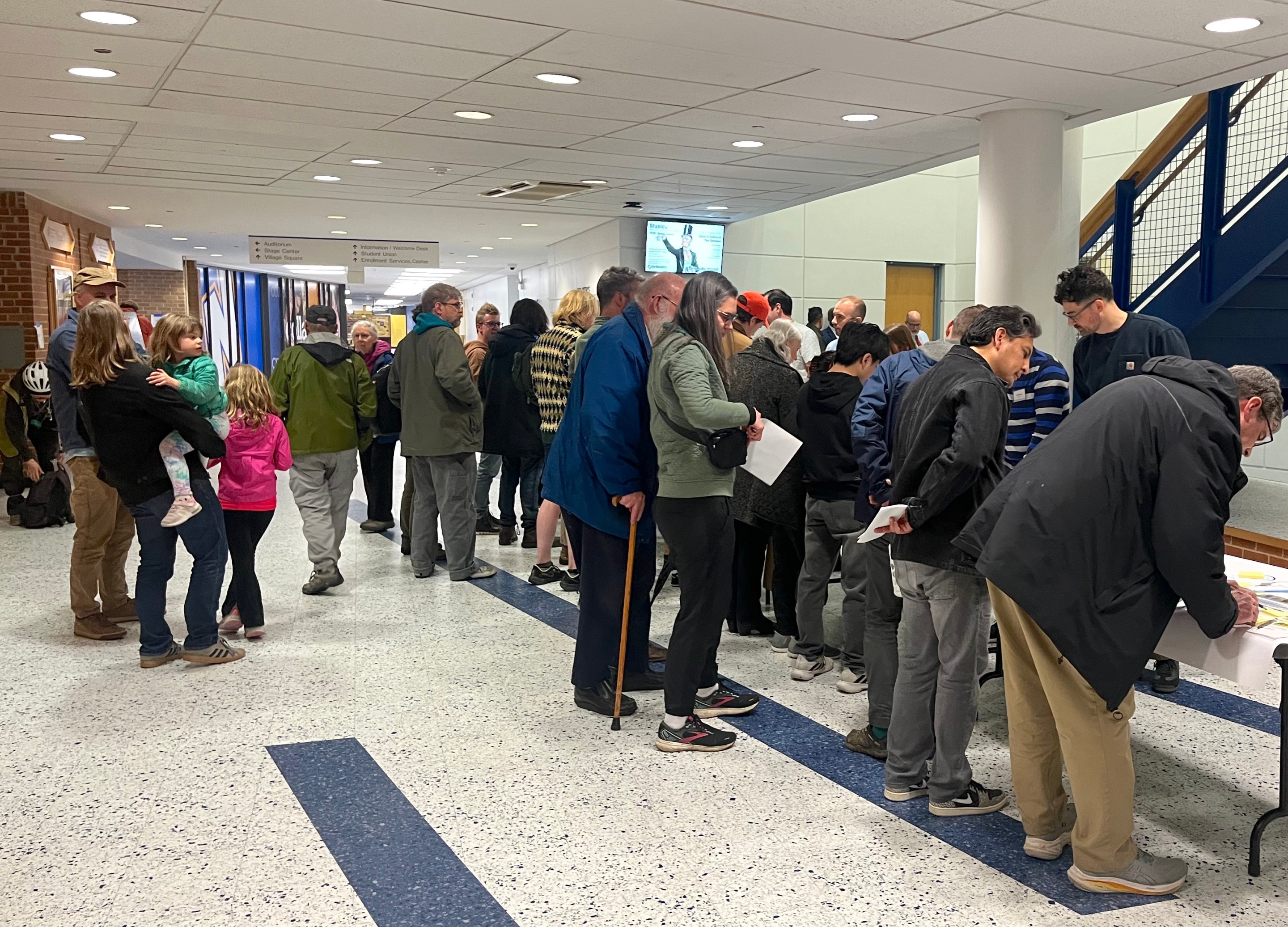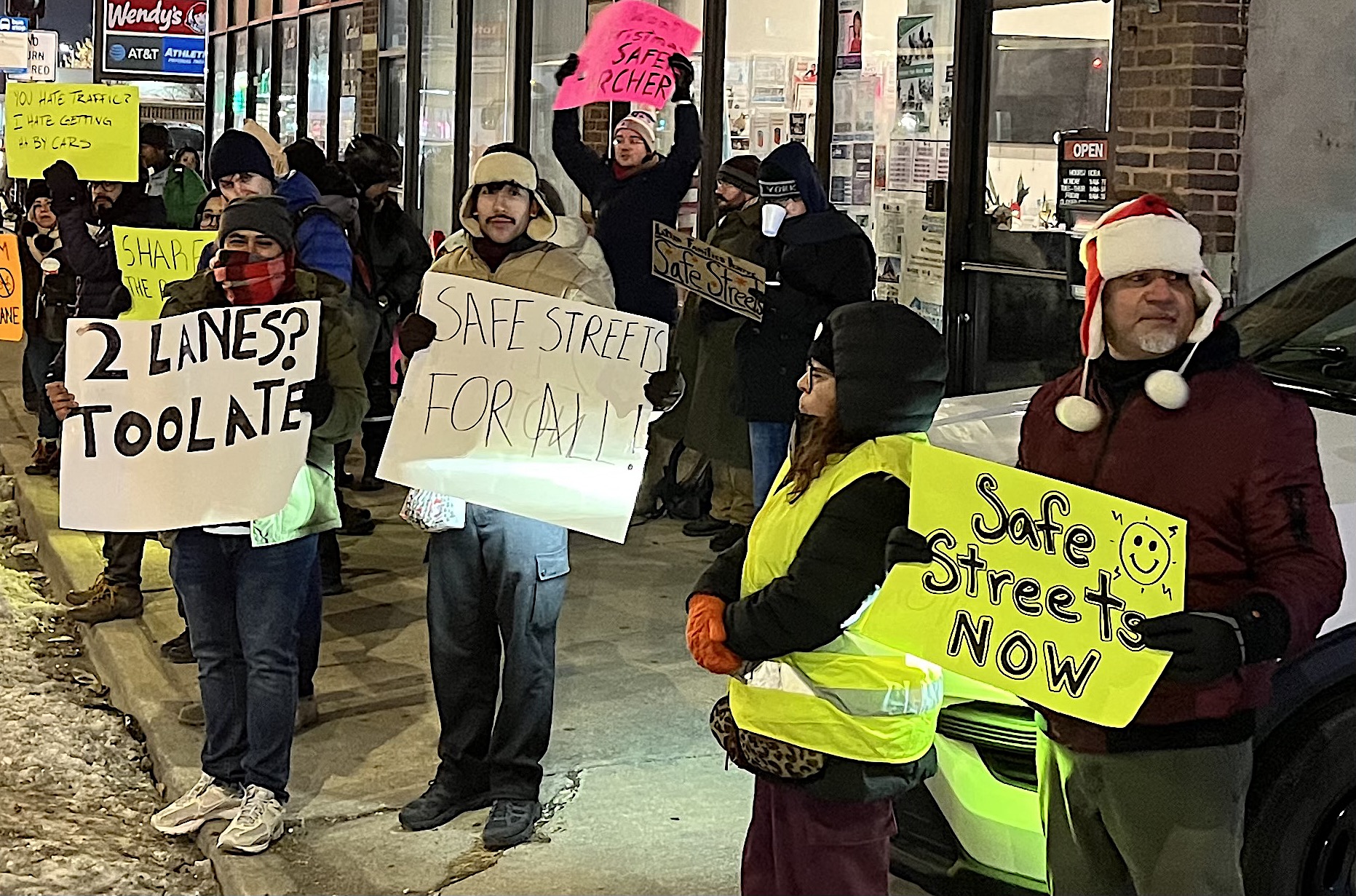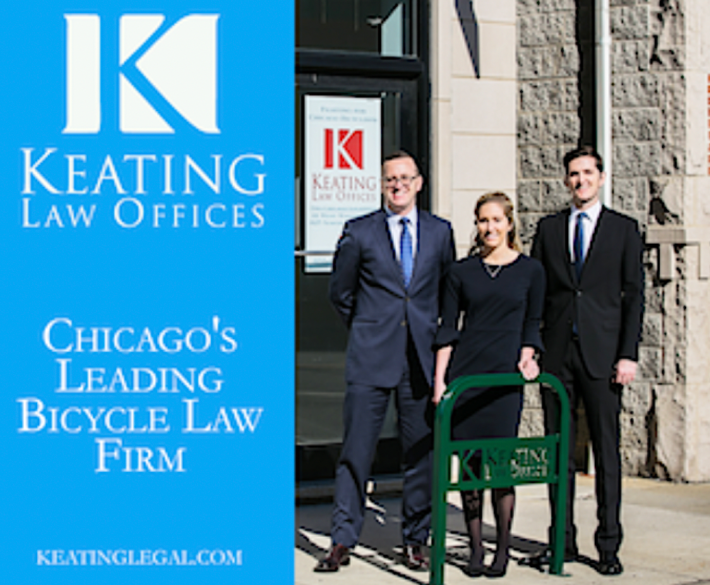
Earlier this month, as I rode my bicycle to Northeastern Illinois University for a community meeting on the proposed Bryn Mawr Avenue protected bike lanes, I thought about Donald Heggemann, 59, a ceramist who worked at the school. In October 2023, he was cycling home in a non-protected bike lane on Damen Avenue south of Foster Avenue in Lincoln Square when an allegedly intoxicated driver crossed the painted bikeway line and fatally struck him. If the bike lane had physical protection, Heggemann might still be alive today. It's important to keep that case in mind as 39th Ward residents consider the Chicago Department of Transportation's proposal to create a safer route on Bryn Mawr, not just for bike riders, but for all road users.
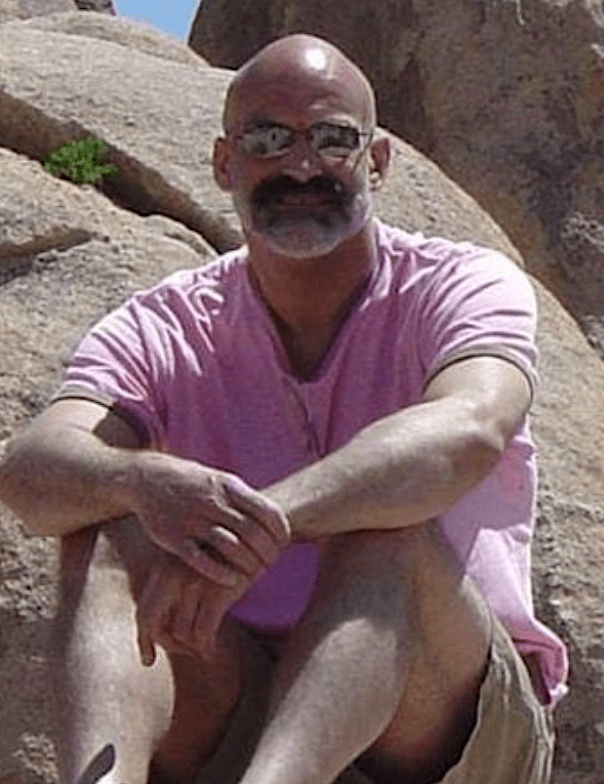
A few dozen people showed up to NEIU's recital hall for the hearing on the route, which would be roughly 1.5 miles long, connecting the Sauganash / Valley Line Trail and the North Shore Channel Trail. The event was cohosted by the Hollywood-North Park Community Association.
Andrew Johnson, the association's executive committee chair, introduced the meeting, noting that while the protected bike lane design is proposed, State funding has already been secured for some kind of bikeway. "Everybody in the room tonight has a different experience of Bryn Mawr Avenue, a different relationship to the avenue and to biking and to transportation, so I think it's safe bet that all of us have something to learn from one another tonight," he said. "I hope that we will embrace the opportunity in that spirit."
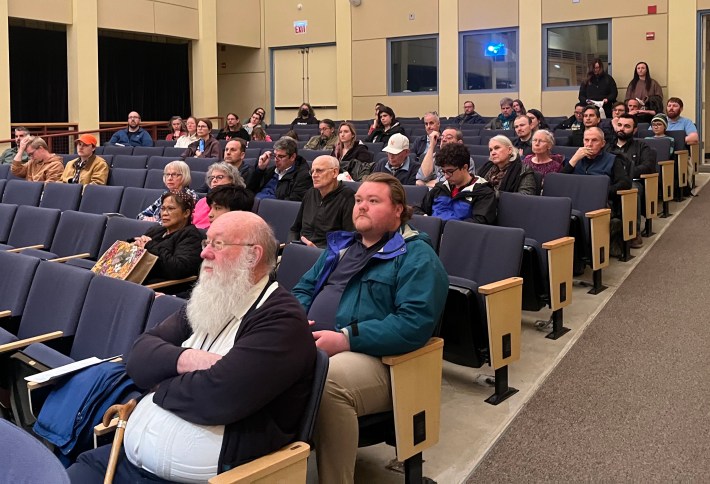
Ald. Samantha Nugent (39th), whose Far North Side district includes the entire project area, thanked State legislators Sen. Ram Villivalam (D-8th) and Rep. Kelly Cassidy (D-14th) for helping to nail down the State funding. She added that no ward funds will be used.
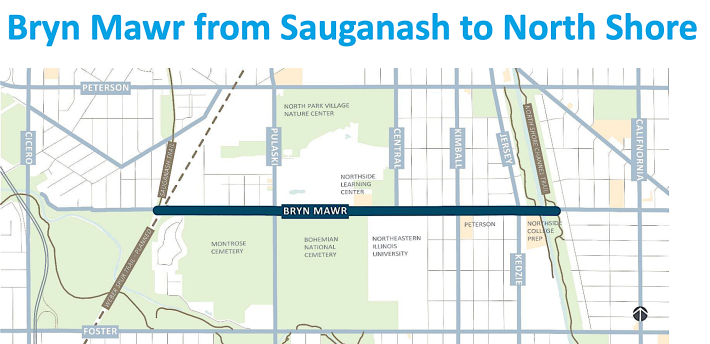
The alder also provided an update on the long-awaited Weber Spur Trail, which would cross Bryn Mawr near the Sauganash Trail (see the dashed line on the above map. "CDOT is still working on it," she said. "It's in Phase 1, the preliminary engineering phase. That's the preliminary engineering project, and we are waiting for improvements from the Illinois Department of Transportation." Assuming IDOT and the feds sign off, CDOT can work on final design engineering and land acquisition.
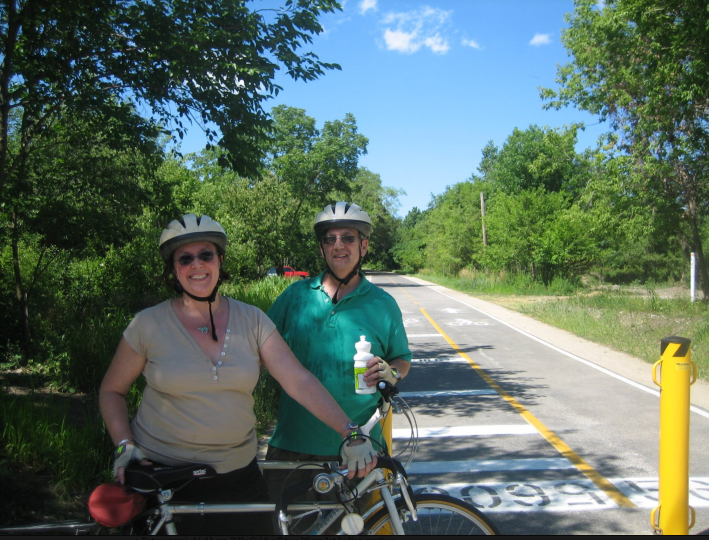
Next, CDOT Complete Streets Director David Smith took the podium. He pointed out that the proposed protected lanes wouldn't just shelter people on bikes from distracted, reckless, and intoxicated drivers. They would also shorten crossing distances for people on foot, and calm motorized traffic to help prevent driver-driver crashes. "It's really about improving the safety and accessibility for everybody," he noted.

"We'll be focused in on Bryn Mawr tonight, but we're really looking at it in the context from Foster up to Peterson," the arterial streets four blocks north and south of Bryn Mawr, Smith added. "From a pedestrian, from a bicycle standpoint, going east and west on a street like Peterson or Foster is very challenging." He added that Bryn Mawr is the one east-west connecting street in this part of Chicago that’s under the jurisdiction of the City, as opposed to the historically driver-throughput-obsessed state transportation department.
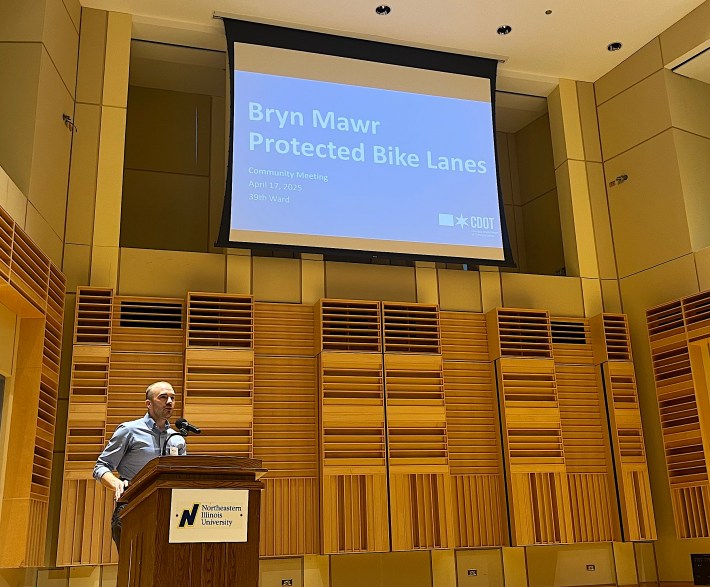
CDOT Complete Streets Planning Manager Brad Huff then walked the audience through the details of the proposal, noting that the design had not been finalized and would still be open to community feedback after the meeting.
Huff said CDOT clocked 2,250 drivers speeding over the 30 mph limit, more than 25 percent, along this part of Bryn Mawr per day, partly as a result of wide travel lanes. He noted that studies show that while people struck at 30 mph usually survive, those hit at 40 or higher almost always die. During the past five years there were 186 crashes on the corridor, with 48 people injured, a third or whom were walking or biking. So taking steps to calm traffic and protect bike riders here makes a lot of sense.
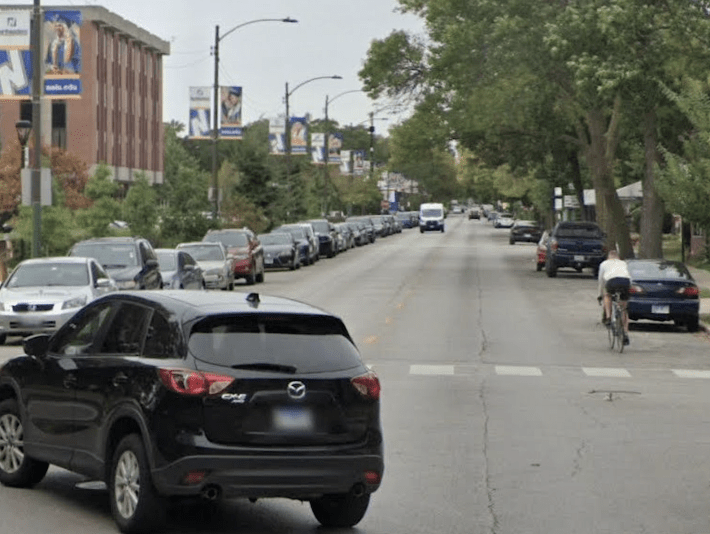
Huff acknowledged, "To get all of these benefits, the tradeoff is consolidating parking from one side of the street" to make room for the PBLs. When CDOT has proposed this strategy elsewhere, drivers have often immediately assumed the result would be carmaggedon. But the department has plenty of experience successfully using this approach.
"We've done this exact type of project, this exact configuration, with these exact tradeoffs, in neighborhoods throughout the city, in busy commercial areas," he said. "We've seen a lot of success in terms of slowing vehicle speeds and decreasing crashes, and also doing so in a way that has not harmed businesses."
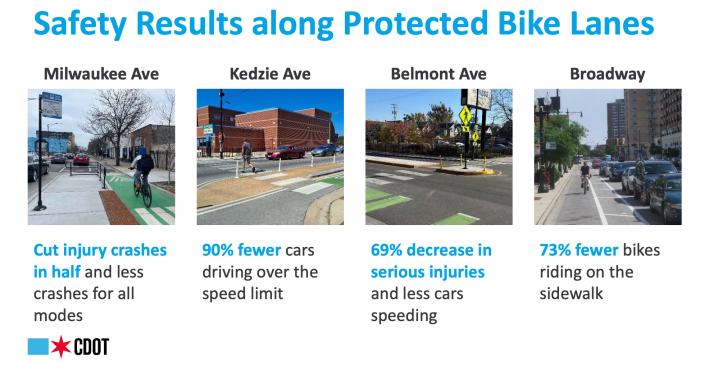
But after the presentation, an attendee named Melody told me she wasn't buying that argument. She lives in the Hollywood Park Condominiums, a 36-unit building on the south side of Bryn Mawr between St. Louis Avenue and Bernard Street. "They cannot take all the parking to one side of the street," she insisted. "There will be no way everybody can go to one side of the street."
She said her building currently has 27 off-street parking spots for residents. "However, at the time the building was built, most people did not have more than one car," she added. "Most people were probably using CTA considering how close Kimball Avenue is. But over the years, many people in the building have one or two cars and families – some of them have three cars."
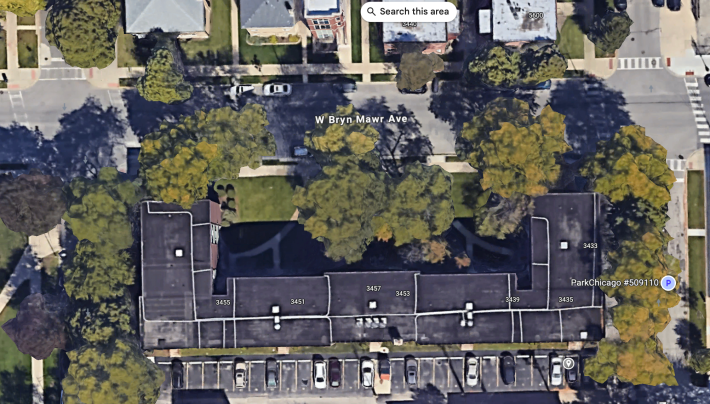
That's an interesting argument, that potentially lifesaving infrastructure is a non-starter, because the City must accommodate households that own three cars.
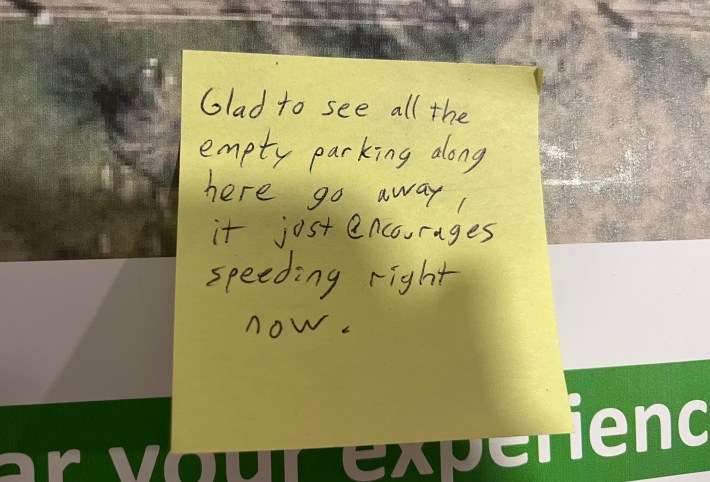
Her condo association's president David Simon handed me a printout of an open letter to CDOT opposing the proposal, which included other dubious claims. For example, "[Chicago Police Department] and [Chicago Fire Department] using Bryn Mawr will be impaired from easily passing through if there are stalled vehicles in the narrowed east- and westbound lanes." I've debunked that argument against PBLs from worried neighbors and "Not In My Back Yard" newspapers so many times on this site, I've lost count.
But for starters, watch the video above of Clark Street next to Graceland Cemetery, from the 1:15 mark. It demonstrates that protected bike lanes don't obstruct first responders any more than parked cars do.

Want to help ensure Streetsblog Chicago can keep publishing articles like this for another year? Please consider making a tax-deductible gift here. Thanks!
But there seemed to be plenty of people at the meeting who supported the proposed layout. One was Sam, a factory worker who lives in the neighborhood. "I think it's a good thing," he said. "We're trying to undo a lot of the past sins that we've done in terms of prioritizing, 'everything needs to be done in a car.' In a lot of cases, using a car is not really a good deal. You sit there, you pay a ton of money for parking, gas is expensive, and you can't find parking and all that stuff. And this would create something safer." His main feedback was that he would like to see the design incorporate protected intersections to shield people on bikes from turning drivers.

One question I had for Huff during the open house portion of the evening is how the proposal, including parking conversions, is being pitched to merchants on the corridor's main retail strip. That's between Kimball and Kedzie / Jersey avenues, next to the North Shore Channel and it's ubiquitous trail. That business district is home to the popular Bryn Mawr Breakfast Club, 3348 W. Bryn Mawr Ave., and a diverse mix of Asian eateries, including Midori, 3310 W., possibly the best old-school Japanese restaurant in town.
"We want to hear all of those concerns," Huff said. "We're not just here to hear folks that are supportive of this, but we really want to hear from folks who are concerned. I mean, change can be scary to everyone, especially when you're used to how the street has been laid out for decades. And it's even more of a concern we get from business owners, especially small business owners, who put their life into their businesses."
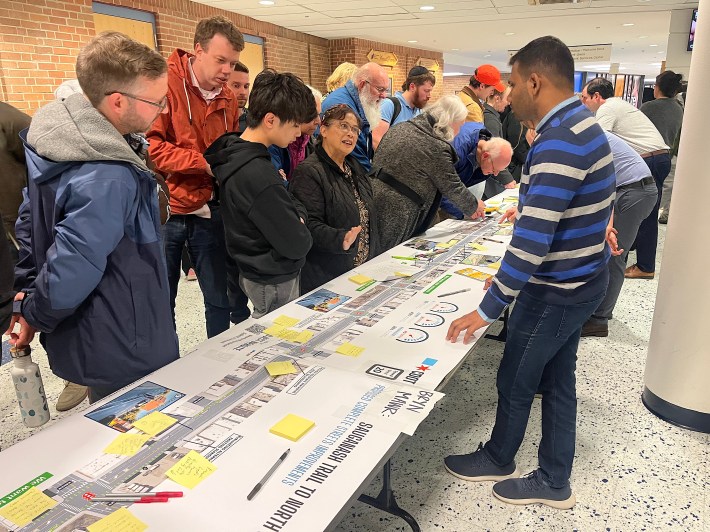
"So we spend a lot of time really listening very seriously to every concern and doing everything we can to really balance all those concerns with the goals of the project," Huff added. "We've done that on really every protected bike lane we've installed. I can name a number of changes made on Milwaukee Avenue based on conversation with businesses." He said that on Clark Street in Uptown, where CDOT is considering doing a similar parking-to-PBLs swap, the department has talked to 70 businesses seeking input. "We're getting the sort of feedback that really helps make sure that we can accommodate critical uses and needs for business."
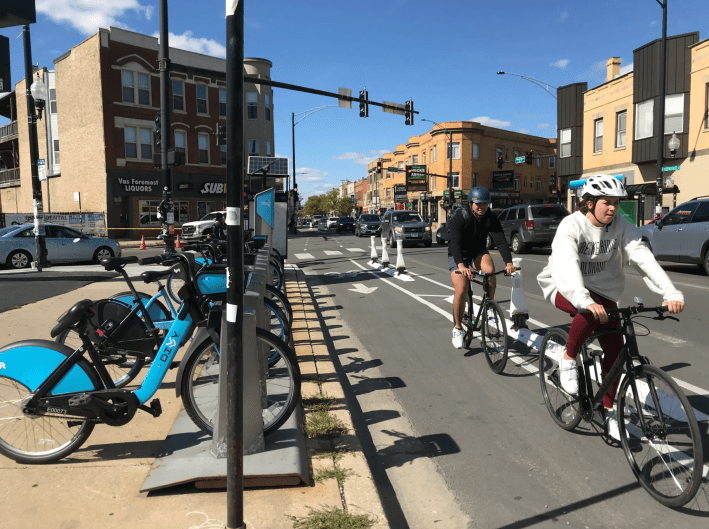
So it's understandable that some neighbors are apprehensive about the proposed changes to improve safety on Bryn Mawr. But it sounds like CDOT is doing its due diligence, including adjustments where needed, to help ensure the protected bike lanes here would be a success, as they've been in other parts of town.
Outreach for the project is slated to continue through this fall, with the final design completed by the end of the year, and construction starting in 2026.
Check out the meeting presentation here.

Did you appreciate this post? Streetsblog Chicago is currently fundraising to help cover our 2025-26 budget. If you appreciate our reporting and advocacy on local sustainable transportation issues, please consider making a tax-deductible donation here. Thank you!
